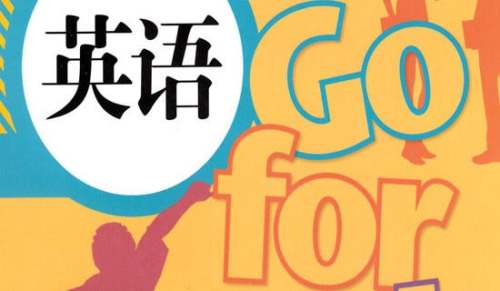精選中國餐桌禮儀英語小短文
【篇一】

The main difference between Chinese and western eating habits is that unlike the West, where everyone has their own plate of food, in China the dishes are placed on the table and everybody shares. If you are being treated by a Chinese host, be prepared for a ton of food. Chinese are very proud of their culture of cuisine and will do their best to show their hospitality. And sometimes the Chinese host use their chopsticks to put food in your bowl or plate. This is a sign of politeness. The appropriate thing to do would be to eat the whatever-it-is and say how yummy it is. If you feel uncomfortable with this, you can just say a polite thank you and leave the food there
二者的主要區(qū)別中西飲食習慣的是,不同于西方,在那里每個人都有自己的板的.食品,在我國的菜放在桌子上,每個人的股票。如果您正在接受治療由中國主辦,準備為一噸糧食。中國感到非常自豪的文化,美食和將盡力表現(xiàn)出的熱情好客。
有時中東道國利用他們的筷子把食物在你的碗或鋼板。這是一個跡象禮貌。適當?shù)淖龅氖率浅允裁矗@,是多么漂亮,說是。如果你感到不舒服,你可以說,感謝你和禮貌離開食物
【篇二】
China Dining Custom
Table Manners
The main difference between Chinese and western eating habits is that unlike the West, where everyone has their own plate of food, in China the dishes are placed on the table and everybody shares. If you are being treated by a Chinese host, be prepared for a ton of food. Chinese are very proud of their culture of cuisine and will do their best to show their hospitality.
And sometimes the Chinese host use their chopsticks to put food in your bowl or plate. This is a sign of politeness. The appropriate thing to do would be to eat the whatever-it-is and say how yummy it is. If you feel uncomfortable with this, you can just say a polite thank you and leave the food there.
Eating No-no's
Don't stick your chopsticks upright in the rice bowl.Instead,lay them on your dish. The reason for this is that when somebody dies,the shrine to them contains a bowl of sand or rice with two sticks of incense stuck upright in it. So if you stick your chopsticks in the rice bowl, it looks like this shrine and is equivalent to wishing death upon a person at the table!
Make sure the spout of the teapot is not facing anyone. It is impolite to set the teapot down where the spout is facing towards somebody. The spout should always be directed to where nobody is sitting, usually just outward from the table.
Don't tap on your bowl with your chopsticks.Beggars tap on their bowls, so this is not polite.Also, when the food is coming too slow in a restarant, people will tap their bowls. If you are in someone's home,it is like insulting the cook.
Drinking
Gan Bei! (Cheers! “Gan Bei” literally means “dry [the] glass”) Besides beer, the official Chinese alcoholic beverage is Bai Jiu,high-proof Chinese liquor made from assorted grains. There are varying degrees of Bai Jiu. The Beijing favorite is called Er Guo Tou, which is a whopping 56% alcohol. More expensive are
Maotai and Wuliangye
Chinese table manners
Chinese table manners of families have no intrinsic quality even there are different region and position. No matter three meals a day or guest’s arrival, always bowls with chopsticks, food with soup. There is no rule for how to put the tableware. What people care about more are not the gorgeous tableware but the sumptuous food. People’s dining position reflects the most obvious etiquette of Chinese table manners. In ancient society, men are supreme, and women are not allowed to sit with men on the same table. Although this is modern society, this kind of ancient etiquette still remains. Today in China, the phenomenon that men sit on the table before women can be found everywhere. The master of a family usually sits on the first-class seat. The first-class seat is usually near the interior of a room facing to the door. Once there is a guest, the master will offer the first-class seat to the guest politely. If it is an ordinary meal of family, families should start after the elder. If there is a guest, the master offer the food to the guest is essential from the beginning to the end. And the tradition of urging others to drink is also a special phenomenon.
Even there is no official “table manners’ in china, while there is “eating behavior”. Once there is “eating behavior”, there must be some eating manners up to standard.
Here are some characteristics on Chinese eating:
a. Keep your eyes on the meal, especially at the beginning of the meal.
b. When eating, keep your bodies forward, and face to your food.
c. It is allowed to spit the bone on the tables.
d. When chewing, it is allowed to make some rhythmical noisy of chewing.
e. Traditional Chinese meal doesn’t need the public chopsticks.
f. Traditional Chinese meal doesn’t have the sweet snacks after meal.
【精選中國餐桌禮儀英語小短文】相關文章:
英語作文:中國餐桌禮儀10-30
英語介紹中國餐桌禮儀10-25
中國餐桌禮儀英語學習12-01
中國餐桌禮儀英語介紹11-15
中國的餐桌禮儀英語作文12-05
中國餐桌禮儀英語句子11-14
中國餐桌禮儀的英語作文10-31
中國的餐桌禮儀英語介紹10-25
用英語介紹中國餐桌禮儀06-13
中國餐桌禮儀英語作文2篇12-19